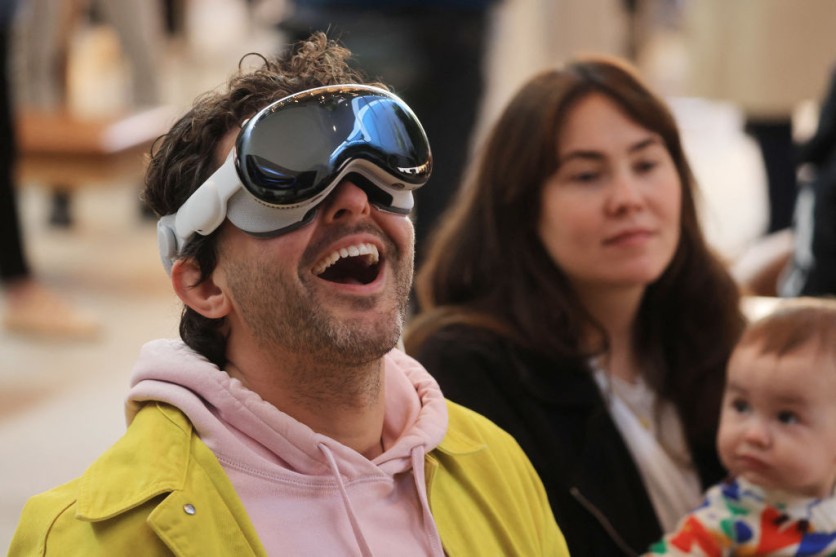
Now that we have Apple's Vision Pro, big tech is betting on AR glasses being the future of computing. But these companies need them way more than we do.
No matter how you look at it and how impressive Apple's Vision Pro-tech might be, they are currently nothing but an expensive novelty. Despite celebrity videos and people stunt-wearing them out on the street, only some people will drop $3,500+ on a possible future of computing. But how about when these things get as small as a pair of sunglasses? Will we all be wearing them? It's still far from a sure thing.
"The information one gets from an AR/VR device isn't much greater than one can get from holding up a phone to something, so users have not felt the need to put on something that covers the face. Maybe, like cats who hate to have their whiskers messed with, humans recognize vision is such an important sense that covering it with something like a headset better be making a huge difference in our lives to make it worthwhile," Andrew Pearson, academic and AI software consultant, told Tech Times in an interview.
The Wrong Problem
Big tech loves AR. The smartphone market is completely saturated. In 2021, the number of mobile devices worldwide (including tablets) was 15 billion, around two for every person on the planet. Apple, whose business is built mainly on iPhone sales, would love to be as dominant in the next computer platform, with a virgin market ready to exploit.
Ad companies like Facebook (Meta) and Google love AR, too. Their reach is limited to the online world, with real-world penetration mostly limited to tracking your location. By bringing you into a VR "metaverse" or melding the online and offline worlds through augmented reality (AR), they also get a whole new market to devour.
But the attraction for us, the buyers and users, is not so obvious. Right now, the barrier to entry is just too high. Even in a world where kids can afford AirPods Pro and shop assistants work with one or two earbuds, the Vision Pro is too expensive. It's also big and heavy, lasts only a couple of hours on a charge, and is dorky as all get out.
"Putting in a wireless earbud while doing other tasks or at work has become somewhat normalized (depending on the job) precisely because it's unobtrusive and leaves the person open to social interaction," Gareth Barkin, the dean of operations and technology at the University of Puget Sound, told Lifewire in an interview. "But an AR headset creates a much larger and more intrusive barrier to interaction with friends and coworkers. The barrier needn't be a technological one to be important-the social impression one gives off by wearing a large, tech-laden headset has significant consequences of its own."
The Image Problem
But how about when these things look like a pair of regular specs? Will we wear them then? One aspect is the social barrier, which can probably be surmounted.
"Of course, if these devices are miniaturized to the point they can provide robust AR functionality in conventional-looking glasses, that could begin to turn AR from a novelty to a game changer. People are often willing to adapt to socially challenging technology if there is a low barrier to entry and clear utility-that's what we've seen with AirPods-but there are also limits to what society will accept. Google Glass ran into social barriers a decade ago when it was introduced as a beta product," said Barkin
But there's another barrier-utility. We're not going to use these things unless they offer something obviously better than the phones we have today. After all, even carrying a personal pocket computer wasn't a sure thing. It piggy-backed on the success of cell phones, which had a clear advantage over regular phones and were heavily subsidized by carriers, too.
Imagine, for a moment, a typical smartphone scenario. Somebody is sitting on the metro, scrolling their socials or TikTok, zoning out. That kind of passive viewing translates easily to AR glasses. But as soon as you send people messages, all bets are off. Even if AI voice control is perfect and copes with noisy public spaces, you still have to dictate your words into the device, and as we've already seen from the Vision Pro, virtual floating keyboards plain suck.
These headsets are trying to let us avoid staring into our phones to free us from tapping on their screens. What they forget is that we love staring at our screens and tapping out messages to friends. That's not to say that AR doesn't have a place, but it's definitely not the slam-dunk sequel to smartphones that Apple, Google, and Facebook want it to be.
Charlie Sorrel has been writing about technology, and its effects on society and the planet, for almost two decades. Previously, you could find him at Wired's Gadget Lab, Fast Company's CoExist, Cult of Mac, and Mac Stories. He also writes for his own site, StraightNoFilter.com, Lifewire Tech News, and iFixit.
ⓒ 2025 TECHTIMES.com All rights reserved. Do not reproduce without permission.




